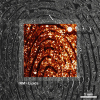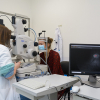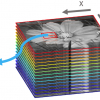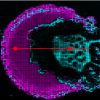J. Bianca Jackson
Marie Curie Research Fellow, University of Reading, Whiteknights, Reading, Berkshire RG6 6AY, UK.
E-mail: [email protected]
Introduction
Spectroscopy and imaging have become well-established tools in the evaluation and conservation of drawings, paintings, sculptures and many other art forms. Electromagnetic radiation-based measurement techniques exploit the fact that materials reflect, absorb and emit radiation in ways that depend on their molecular composition. Unlike chemical analysis, these techniques can be used non-invasively and therefore rarely require specimens to be removed from the art sample, which is beneficial to the preservation of the work of art being studied. However, some of the more powerful forms of radiation for imaging, such as X-ray, gamma-ray, proton and neutron, are ionising and usually available only through external specialised laboratories or large research installations, which can be both financially and logistically challenging for heritage conservators. Because it is non-ionising, moderate exposure to terahertz radiation poses significantly less long-term risk to the molecular stability of the historical artefact and humans than other forms of radiation. Also, portable terahertz systems are becoming increasingly available and affordable.
Terahertz spectroscopic imaging is a nascent technique—established in the 1990s, and developed only in the last several years for cultural heritage applications. Terahertz (THz) radiation—designated between the microwave and infrared (IR) regions—penetrates most non-polar, non-metallic media. Many dielectric materials that are opaque or highly scattering at optical frequencies are transparent at terahertz frequencies. It is the combination of material characterisation, time-of-flight imaging and the penetration of optically opaque materials that gives rise to applications for sub-surface imaging of many culturally significant objects. Moreover, the variety and adaptability of the many electronic, photonic and hybrid terahertz sources allows for versatile approaches to measurements. Spatial resolution can be scaled from tens of micrometres to several millimetres, providing the possibility of taking measurements without necessitating sample extraction—either in the laboratory or in the field. In addition, THz radiation is considered non-destructive because its low photon energy is non-ionising and molecular heating—due to absorption—is low. Therefore, it is appropriate for scientists to develop THz measurement techniques in order to facilitate, qualify and quantify the non-destructive evaluation of objects in ways in which other measurement techniques may not.1 Examples of some applications of THz spectroscopic measurements in cultural heritage are outlined in the sections below.
Methodology
Our terahertz time-domain spectroscopic (TDS) imaging system consisted of a commercially-available ultrafast, optically-excited, fibre-coupled photoconductive emitter and receiver pair by Picometrix, Inc. For both the transmission and reflection geometries, the terahertz beams were focused onto the surface using 1" (2.54 cm) focal length lenses. The antennas were raster-scanned across the painting in 1-mm increments. Each pixel acquired was an average of 25 time-domain waveforms plus Coif 5 wavelet denoising, and each pixel spectrum was obtained via fast Fourier transform with a tapered cosine apodisation window. Due to the limited scan range of the XY translation stages and the size of the dataset, artworks are often scanned in multiple sections, sometimes over a couple of days. This results in some variation in signal quality and alignment, which are addressed in the post-processing stage.
Paleolithic cave etchings at Creswell Crags, UK
In 2002, the first evidence of prehistoric cave art in Great Britain was discovered at the Creswell Crags, on the Derbyshire–Nottingham border in the UK.2 Much of this art comprised of etchings—or patterns directly engraved into the rock using a sharp implement—which, unlike paintings, are difficult to recognise or see without a practiced eye. True prehistoric etchings can be distinguished from contemporary graffiti by the presence of a rock patina, due to prolonged weathering, exposure and precipitation, and the uranium-series dating of the flow rock, layers of calcium precipitate deposits, that overlie the art and Magnesian limestone. The figures are estimated to be approximately 12–15 k years old. We were given access to one such panel in the Church Hole cave at Creswell Crags (see Figure 1a). The figures are series of semi-parallel lines, generally accepted to represent birds of indeterminate type. The lines are v-shaped grooves of depths and widths ranging from hundreds of microns to three millimetres.

Figure 1. (a) Photograph of panel of bird etchings in Church Hole cave, (b) composite of scanned sections of the bird etching and (c) selected b-scan cross-section.
Figure 1b shows the composite of several contiguous sections of the panel. The en face images were generated from peak amplitude signal. The lines from the etching are clearly distinguishable from the other features of the rock. The more rounded, cloud-like shading could be a result of the non-flat surface of the cave due to weathering or flow rock. The dotted, black line denotes the location of the extracted cross-section in Figure 1c, where the horizontal axis represents the time delay of the THz pulse which correlates to depth within the rock. Here we can see variations in the signal suggesting two separate layers—the limestone sub-surface with the calcite flow rock filling into the grooves.
St Mary’s Church in Chalgrove, UK
Situated in Chalgrove, Oxfordshire, UK, St Mary’s Church was founded by a Benedictine monk in the early 12th century CE. Paintings are believed to exist dating as far back as 1320 CE, however, they were all covered during the Protestant Restoration period (1500s to mid-1700s), though many remarkable ones were rediscovered during renovations in 1858. The church was awarded a £1 M grant for renovations and the restoration of their Medieval paintings. Before the work was started, we were invited to examine a region situated on the north nave wall between the window and a plaque. The section was comprised of multiple exposed layers, including the layer suspected of being from the Medieval era (the black motif). This region was broken up into five scanning zones (5 and 7–10; see Figure 2b).

Figure 2. (a) Nave, North Mural second bay and (b) close-up of zones 5 and 7–10.
Figure 3a shows an image of zone 5 generated from the peak-to-peak amplitude of the largest terahertz pulse in the time-domain signal for each pixel. The dark blue lines accentuate the boundaries of the exposed layers. The yellow ochre-painted region has a higher reflectivity than the red ochre-painted region, despite the red ochre region seeming smoother. There is a slight vertical groove about 1 cm to the left of the covered region, which shows up in the THz image as indicated by the pink arrow. It may also be possible to see the lower reflectivity of the black paint in the same area, although it is not well resolved. The black arrow points to a broad stripe that is visible by eye in the most modern layer. However, looking at the time-domain waveforms in Figure 3b, there is a noticeable increase in the size of the second major pulse compared to the first surface pulse where the stripe is (see circled regions). This strongly suggests that the source of the surface defect is something highly reflective, probably metallic, below the surface (Figure 3c). The time-of-flight delay of this second pulse is within reason to come from the same depth as the layer containing the Medieval motif. The black arrow points to a second major pulse beneath the red ochre-painted region. It may also be the same layer we are interested in, despite the difference in the time-of-flight between the main and second pulse.

Figure 3. (a) Zone 5 peak-to-peak amplitude map of entire time-domain signal, (b) select time-domain waveforms and (c) a b-scan cross-section showing strong, possibly metallic, sub-surface feature in Zone 7.
After Fishing by Ausonio Tanda
We examined the mid-20th century Italian painting After Fishing (Figure 4a) by Ausonio Tanda using terahertz time-domain spectroscopic imaging (THz-TDSI) for systematic comparison with multi-spectral imaging (UV, RGB visible, tri-band IR) and X-ray. The painting’s binder is oil—however, the pigments have not yet been identified—and the substrate is unbleached compressed paperboard.

Figure 4. (a) Visible photograph of After Fishing by Ausonio Tanda, and region-of-interest enlargement of (b) X-ray density image and (c) terahertz minimum peak time-of-flight image.
In transmission, qualitative comparisons were made between the X-ray density image (Figure 4b) and THz images and minimum peak time-of-flight (Figure 4c). The linear greyscales for the terahertz images were optimised for qualitative comparability to the X-ray radiograph. Overall, the terahertz images are not as sharp as the X-ray images; however, that is to be expected given the difference in diffraction-limited spatial resolution. The spectral bandwidth of the THz-TDS system was not optimised, so the 1/2e amplitude was approximately 0.7 THz, with the peak frequency around 0.15 THz. However, it should be noted that most of the features present in the X-ray image are present in the terahertz images such that a localised section of the painting shows high correlation between the two techniques. Moreover, in terahertz images not shown here, there are many small spots that do not appear at all in the X-ray image. These spots are a result of defects in the porous cardboard substrate, which we speculate to be oil and/or some kind of biological growth. As such, they are undetectable by standard X-ray systems.
Outlook
The examples discussed above are just a few of many examples of the use of terahertz imaging and spectroscopy in cultural heritage. In the ten years since this research area blossomed, the number of scientists and conservators investigating this technique has grown from a few to dozens around the world, including a few cross-disciplinary PhDs specialising in both! This technique can be applied to objects ranging from paintings to mummies to sculptures, from plaster to wood to metals. With hope, one day it too will be a standard technique.
Acknowledgements
This research has been supported by the following funding programmes: the European Commission’s 7th Framework Programme project CHARISMA [grant agreement no. 228330], the Marie Curie Intra-European project TISCH [grant agreement no. 330442] and AHRC/EPSRC Science and Heritage Programme. The author would like to thank her many collaborators, especially those at the Laboratoire des Recherche des Monuments Historique, Profilocolore srl, St Mary’s Church, Creswell Crags and the University of Reading.
References
- J.B. Jackson, J. Bowen, G.C. Walker, J. Labaune, G. Mourou, M. Menu and K. Fukunaga, “A Survey of Terahertz Applications in Cultural Heritage Conservation Science”, IEEE Trans. Terahertz Sci. Technol. 1, 220–231 (2011). doi: http://dx.doi.org/10.1109/TTHZ.2011.2159538
- P. Pettitt, P. Bahn and S. Ripoll (Eds), Palaeolithic Cave Art at Creswell Crags in European Context. Oxford University Press (2007).














